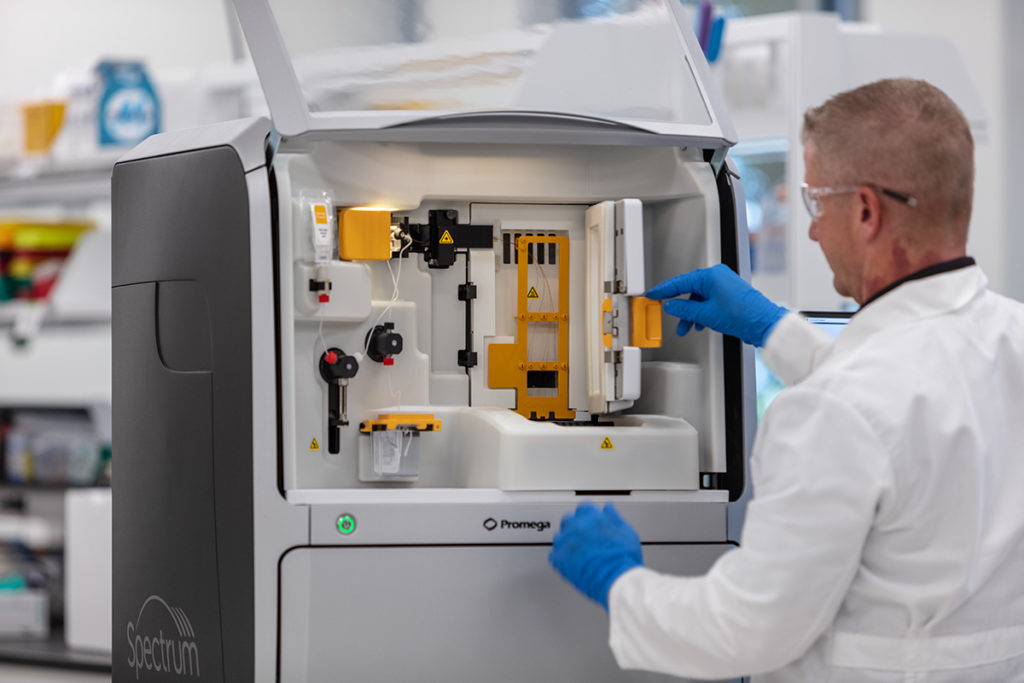Forensic lab validations can be intimidating, so Promega Technical Services Support and Validation teams shared these tips for making the process go more smoothly.
- Prepare Your Lab. Make sure all of your all of your instrumentation (CEs, thermal cyclers, 7500s, centrifuges) and tools (pipettes, heat blocks) requiring calibration or maintenance are up to date.
- Start with Fresh Reagents. Ensure you have all required reagents and that they are fresh before beginning your validation. This not only includes the chemistry being validated, but any preprocessing reagents or secondary reagents like, polymer, buffers, TE-4 or H2O.
- Develop a Plan. Before beginning a validation, take the time to create plate maps, calculate required reagent volumes, etc. This up-front planning may take some time initially, but will greatly improve your efficiency during testing.
- Create an Agenda. After a plan is developed, work through that plan and determine how and when samples will be created and run. Creating an agenda will hold you to a schedule for getting the testing done.
- Determine the Number of Samples Needed to Complete Your Validation. Look at your plan and see where samples can be used more than once. The more a sample can be used, the less manipulation done to the sample and the more efficient you become.
- Select the Proper Samples for Your Validation. Samples should include those you know you’ll obtain results with be similar to the ones you’ll most likely be using, and your test samples should contain plenty of heterozygotes. When you are establishing important analysis parameters, like thresholds, poor sample choice may cause more problems and require troubleshooting after the chemistry is brought on-line.
- Perform a Fresh Quantitation of Your Samples. This will ensure the correct dilutions are prepared. Extracts that have been sitting for a long time may have evaporated or contain condensation, resulting in a different concentration than when first quantitated.
- Stay Organized. Keep the data generated in well-organized folders. Validations can contain a lot of samples, and keeping those data organized will help during the interpretation and report writing phase.
- Determine the Questions to Be Answered. While writing the report, determine the questions each study requires to be answered. Determining what specifically is required for each study will prevent you from calculating unnecessary data. Do you need to calculate allele sizes of your reproducibility study samples when you showed precision with your ladder samples?
- Have fun! Remember, validations are not scary when approached in a methodical and logical fashion. You have been chosen to thoroughly test something that everyone in your laboratory will soon be using. Take pride in that responsibility and enjoy it.
Need more information about validation of DNA-typing products in the forensic laboratory? Check out the validation resources on the Promega web site for more information for the steps required to adopt a new product in your laboratory and the recommended steps that can help make your validation efforts less burdensome.
Like this:
Like Loading...


